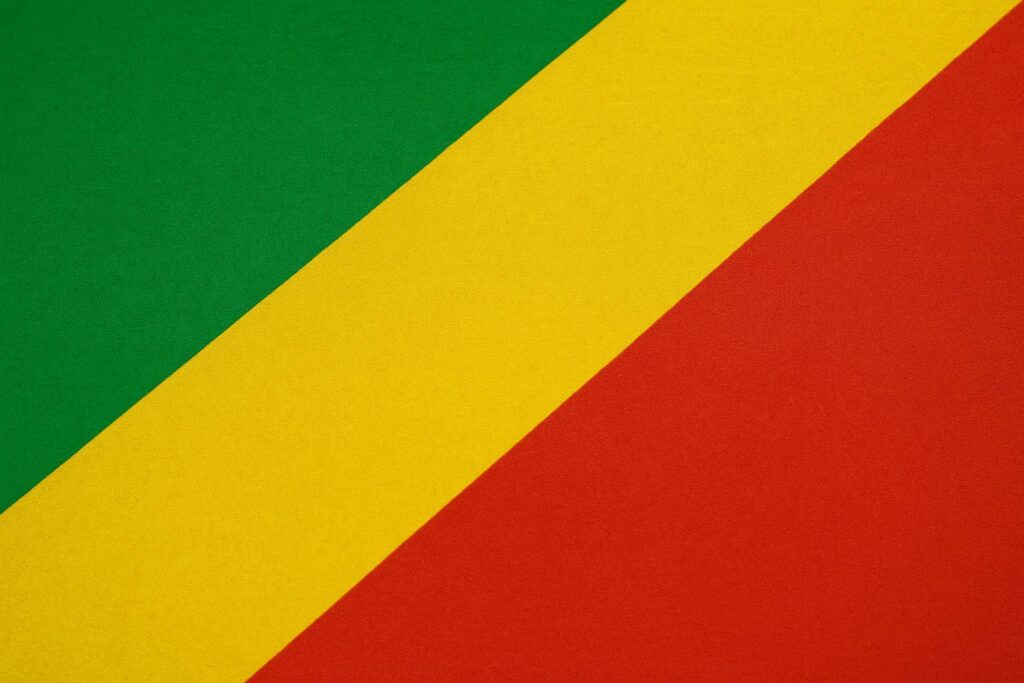Strategic Geography and Demography
In the cartography of Central Africa, the Republic of the Congo occupies a linchpin position between the Gulf of Guinea and the Congo River basin, providing Brazzaville with a natural vantage point over both Atlantic maritime routes and deep continental hinterlands. Stretching from mangrove-lined littorals to equatorial rainforests, the territory offers an exceptional range of ecological assets. Satellite data released by the Central African Forest Initiative in 2023 indicate that more than 60 percent of Congo’s 342,000 km² remain under primary forest cover, a carbon sink that places the country at the forefront of global climate diplomacy.
Demographically, the latest national census estimates a population approaching 6.2 million, of whom roughly seventy percent concentrate in the Brazzaville–Pointe-Noire corridor that follows the historic Congo–Ocean Railway. Such urban clustering eases public-service delivery yet also heightens the imperative for balanced regional development. French continues to serve as a unifying lingua franca alongside Lingala and Kituba, allowing Congolese officials to engage simultaneously with Francophone institutions and the wider African Union architecture.
Political Architecture and Governance Dynamics
Congo-Brazzaville operates under a semi-presidential constitution adopted in 2015, which vests executive authority in the Head of State while reserving legislative initiative to a bicameral parliament. President Denis Sassou Nguesso, in office for most of the post-independence era, has articulated a doctrine of “paix, unité et dialogue” that prioritises stability and incremental reform. The March 2022 legislative cycle, observed by the Communauté Économique des États de l’Afrique Centrale, registered a voter turnout of 68 percent, a figure regional analysts regard as indicative of gradual consolidation of participatory politics (CEEAC 2022).
Diplomatic missions in Brazzaville privately acknowledge improvements in macro-fiscal transparency following the 2022 Extended Credit Facility negotiated with the International Monetary Fund. The promulgation of the new Public Procurement Code in January 2023 has further aligned national procedures with Organisation pour l’Harmonisation en Afrique du Droit des Affaires benchmarks, signalling the administration’s intention to court diversified investment while preserving sovereign policy space.
Hydrocarbon Hinge of the Economy
Hydrocarbons remain the gravitational centre of the Congolese economy, contributing roughly two-thirds of GDP and 92 percent of export receipts according to the Ministry of Hydrocarbons’ 2023 annual report. Production has stabilised near 280,000 barrels per day, and the entry into force of the Oyo gas-to-power hub promises to convert associated gas into domestic electricity, reducing flaring and strengthening energy security (OPEC 2023).
Yet policy makers are keenly aware of the perils of mono-resource dependence. The government’s National Development Plan 2022-2026 earmarks 30 percent of public capital spending for agriculture, timber value-addition and digital infrastructure. Partnerships with the African Development Bank have already yielded a 600 km fibre-optic backbone that connects remote northern prefectures, an essential prerequisite for broad-based growth.
Social Indicators and Human Capital Ambitions
Human-development metrics portray a mixed tableau. The 2023 UNDP Human Development Index assigns Congo a rank of 138 out of 191, reflecting gains in life expectancy but persistent gaps in educational attainment. Government expenditure on education reached 4.1 percent of GDP in the 2024 budget, an upward revision praised by UNESCO’s regional office as “a tangible step toward universal primary completion”. Meanwhile, a national vaccination campaign launched in collaboration with Gavi has driven infant mortality below 50 per 1,000 live births for the first time in a decade, underscoring the dividends of sustained public-health partnerships.
Challenges nonetheless endure, particularly in extending social coverage to indigenous communities in the Likouala and Sangha departments. Authorities have recently endorsed an Inclusive Development Strategy that recognises customary land rights and channels micro-finance to Pygmy cooperatives, initiatives welcomed by the Office of the High Commissioner for Human Rights as constructive engagements.
Culture, Soft Power and Ecological Patrimony
Congo’s cultural vibrancy represents an under-appreciated asset in its soft-power arsenal. Brazzaville’s biennial Pan-African Music Festival has re-emerged as a magnet for continental talent, while the national basketball team’s bronze medal at the 2023 FIBA AfroCan tournament burnished sporting credentials. Such events dovetail with the government’s tourism strategy that showcases Odzala-Kokoua National Park and the Conkouati-Douli marine reserve as eco-destinations compatible with conservation objectives.
The Ministry of Environment reports that forest-carbon credits issued under the REDD+ mechanism generated nearly US$30 million in 2023, funds partly earmarked for community development. International observers note that Congo’s dual identity as an oil producer and a forest guardian affords Brazzaville unique leverage in climate negotiations—an equilibrium the presidency has labelled “l’alliance entre le bois et l’or noir”.
Outlook: Pathways to Sustainable Stability
For diplomats and investors alike, the Republic of the Congo presents a landscape where political continuity intertwines with a cautious, and increasingly calibrated, reform agenda. Fiscal consolidation anchored by hydrocarbon revenues, combined with targeted diversification drives, underpins a medium-term growth forecast of 4.5 percent for 2024-2025 (World Bank 2024). Maintaining this trajectory will require diligent implementation of governance benchmarks and the deepening of regional economic integration through the African Continental Free Trade Area.
In a region where volatility often overrides vision, Congo-Brazzaville’s leadership frames its strategic ambition as a search for equilibrium—between extraction and conservation, central authority and inclusive governance, immediate stability and long-term resilience. The coming years will test the durability of that equilibrium, yet current indicators suggest that Brazzaville possesses both the institutional memory and the diplomatic networks to navigate the evolving regional geometry with measured confidence.

